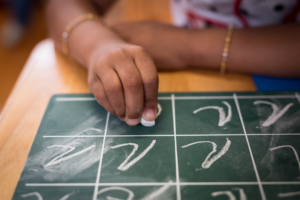By Tania Gaffney–Deputy Principal Primary
Have you ever walked into the supermarket and the products on the shelves have been rearranged, it can take a while to get used to the new layout again. There are certain ways that we help ourselves with this e.g. reading the signage, asking a worker where something is, using the general knowledge that you have about supermarkets. These are some tools that we use to re-orient ourselves to a new place.
A couple of weeks ago at our full staff meeting we had a discussion on the Human Tendency of ‘Orientation’. The tendency to orient is, in its broadest sense, adapting to new situations. This could be physical, social or emotional. For our ākonga it could be something hugely obvious, for instance starting a completely new school, or a bit subtler like having a new piece of equipment in the class.
When we think about orientation of ākonga into a new environment or situation, we also need to take into consideration which ‘Plane of Development’ they are in. How we orient a pre-schooler will not be the same as how we orient an adolescent.
Because the preschooler is still at the stage where they are learning to be physically independent, there is a lot of showing. The primary schooler is working on their intellectual independence which means there is still showing but now we can include more discussion.
Because Wā Ora spans all the way from playgroup to high school, children are often able to become used to the next environment they are moving into a little before they get there. For example, the playgroup ākonga can become aware of what is going on in the pre-school over the fence. The 5 year olds have opportunities to venture into the primary school. The primary schoolers are often in the high school for various reasons.
Think about how you feel when you have had to start a new job, move to a new house or town, a friend has moved away or a child has moved out of home. All very obvious and you know before it happens that you’ll have to get used to the way life is now. But even when it’s something as simple as a change in the supermarket, you still have to reorient yourself, it can take a while to get used to the way things are again, sometimes there is a lot to take in, which is impossible to do all at once. As a child gets older they have more experience with new situations and negotiating their way through them. Some ākonga can take longer than others to orient, but the adults (and sometimes the other children) are there helping them along that new path. As ākonga get older they need less and less direct help with this until as an adult they have learned some skills that will help them to be able to orient efficiently in any environment or situation they find themselves in.

